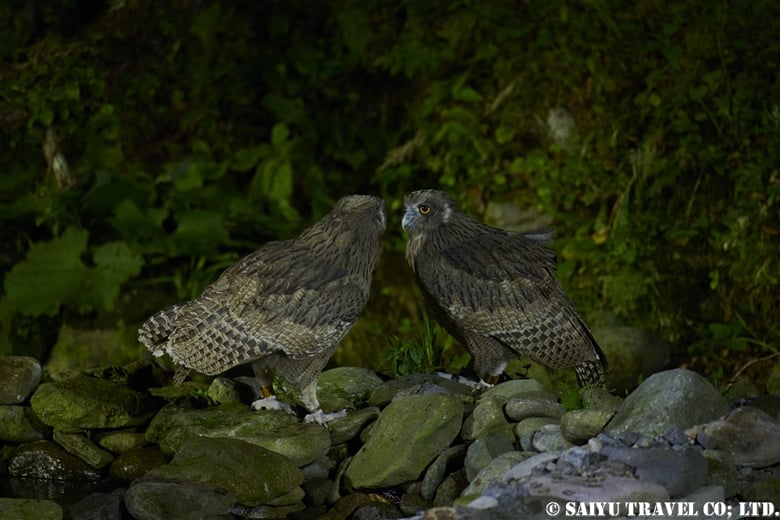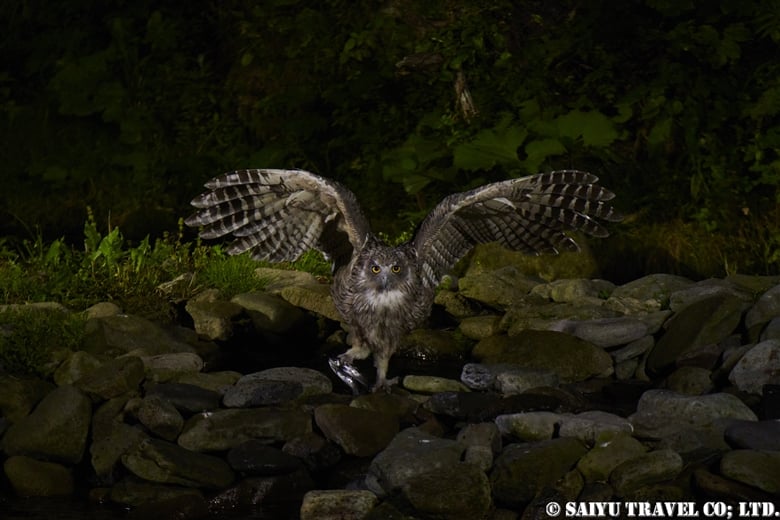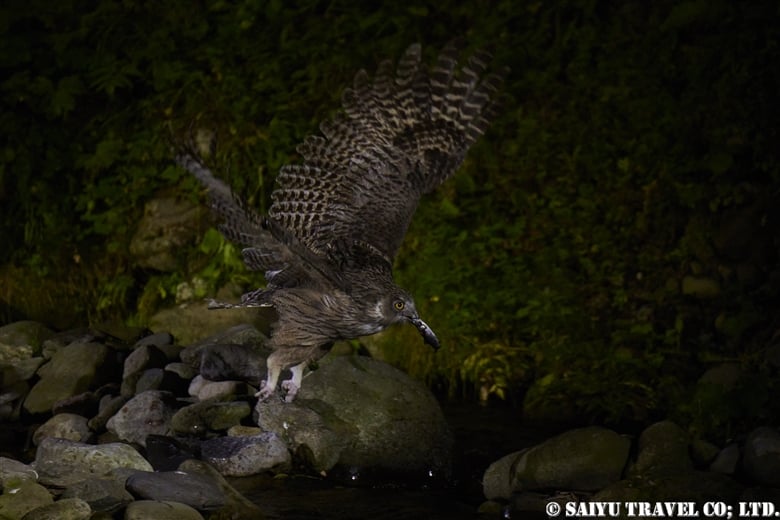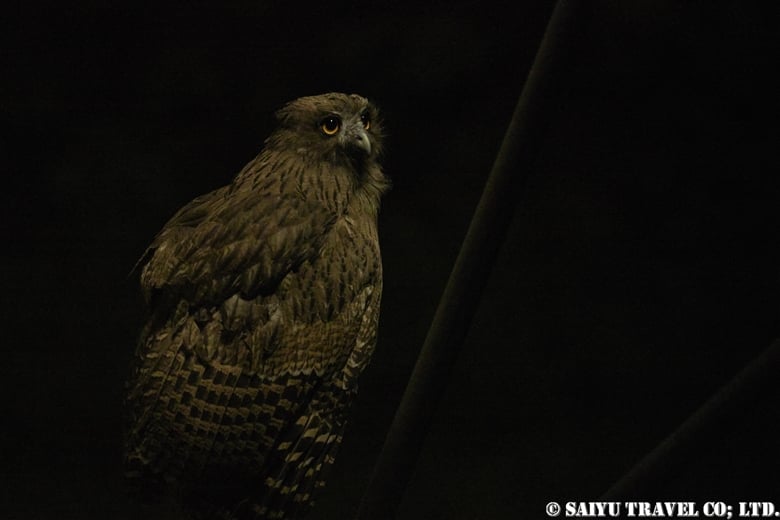
Two chicks were born in 2022
Usually, the Blakiston’s fish owls will mate in February and lay two eggs in March. The female warms them for 35 consecutive days, without rest. However, for the Blakiston’s fish owls it is very challenging with various factors influencing the results: like the extreme weather and cold temperatures during breeding; the physical condition of each owl itself; and their past experience of raising chicks. On average only one bird survives until fledging.
At the Blakiston’s fish owl Observatory in Rausu (Washinoyado), the birds can be observed throughout the year, and in June 2022, the pair were able to fledge both chicks for the first time in 15 years! The young birds practiced flying near their nest, and then eventually around August, they would come down to the river with their parents to learn how to catch the fish. Around September, they learned how to hunt for themselves, becoming more independent.

Mother bird showing how to hunt

The mother taking the food to the chicks
Sometimes, there are young birds that cannot fish successfully, and end up on the roadsides to try to eat roadkill. However, they might end up getting hit by cars due to the dark conditions. Thankfully, our two chicks at the Observatory have been safe from this kind of accident so far.

One of the chicks born in 2022
In December, the two will become independent, and then around 2024 they will mature and find their own partners and live somewhere in Shiretoko. I am praying that they can both survive the trials of winter to live long lives.
Image & text: Kaito IMAHORI
This report is based on observations till Oct 2022
*Contact us, Saiyu Travel for more information about wildlife and bird watching in Hokkaido. We can make various arrangements for your trip. We have a guesthouse, Shiretoko Serai, in Rausu, Shiretoko Peninsula.



